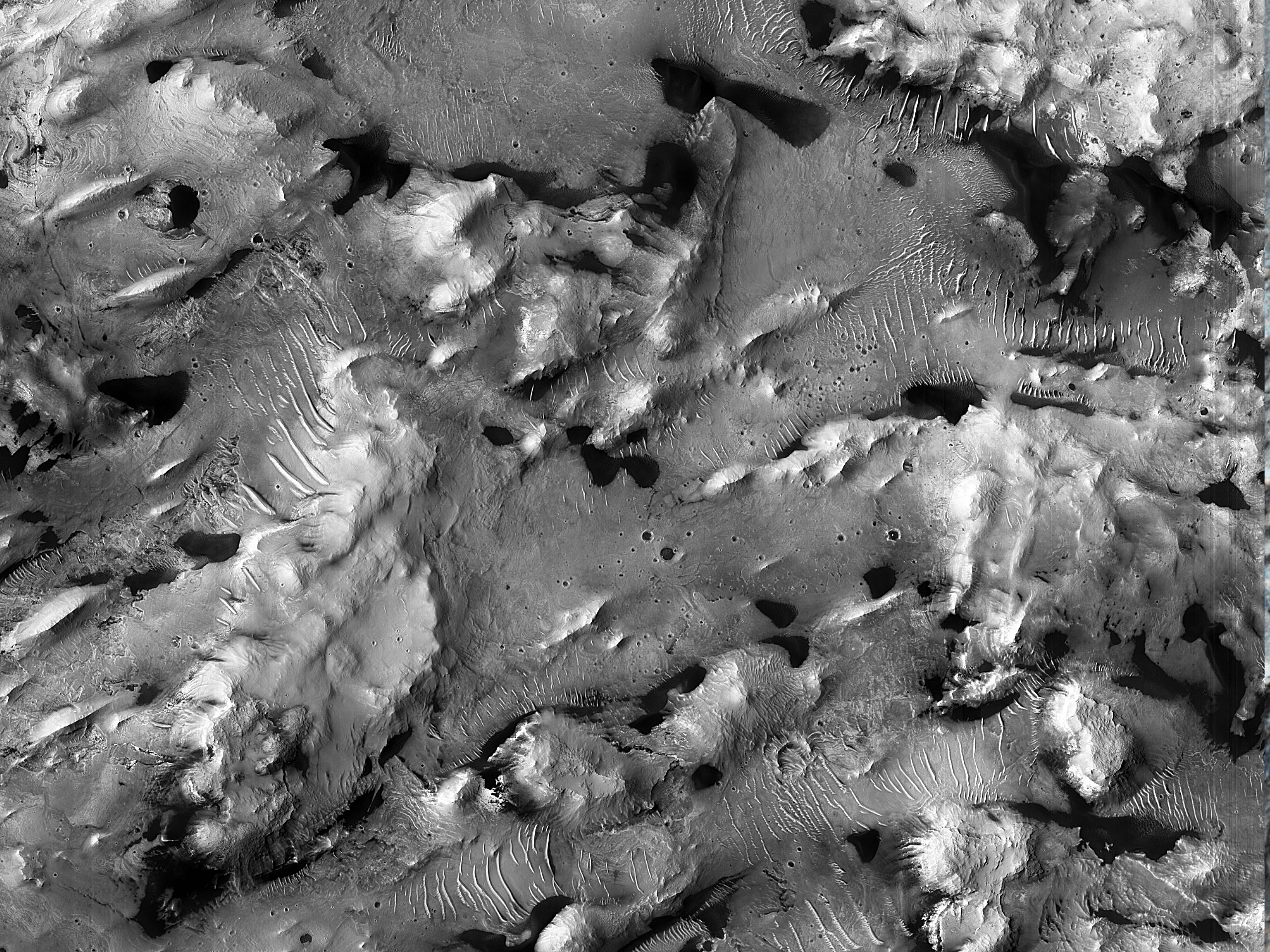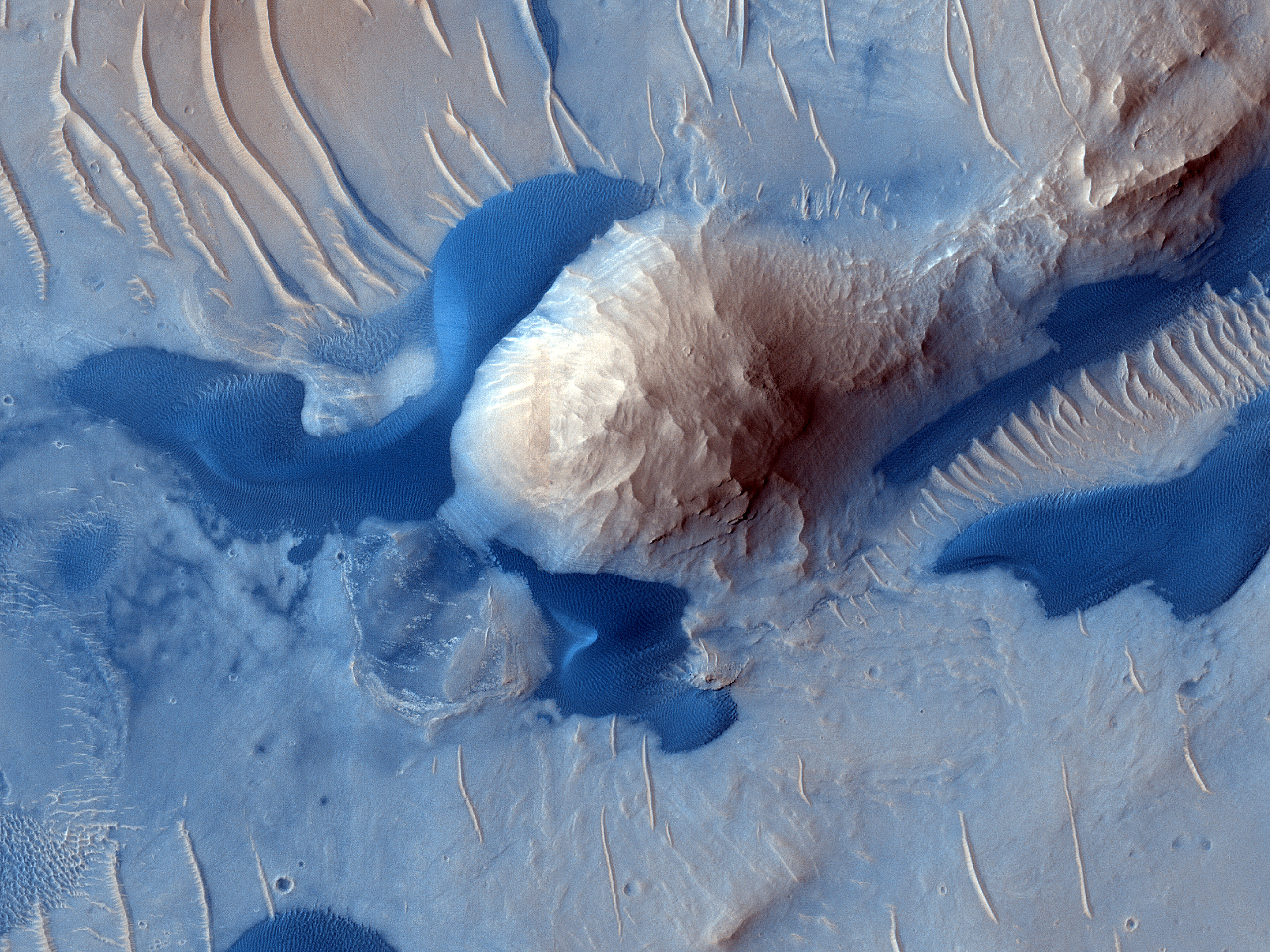Pasteur Crater is about 116 kilometers in diameter and most of the dark dunes are clustered in the southwest area. This observation of wind-blown (aeolian) dunes superposed on wind-blown ripples can help us look for bedform changes from earlier pictures. The source of the dark sand might be local, such as from smaller impact craters inside Pasteur that excavated sediments.
ID:
ESP_072147_1995date: 17 December 2021
altitude: 283 km
https://uahirise.org/hipod/ESP_072147_1995
NASA/JPL-Caltech/University of Arizona
#Mars #science #NASA

